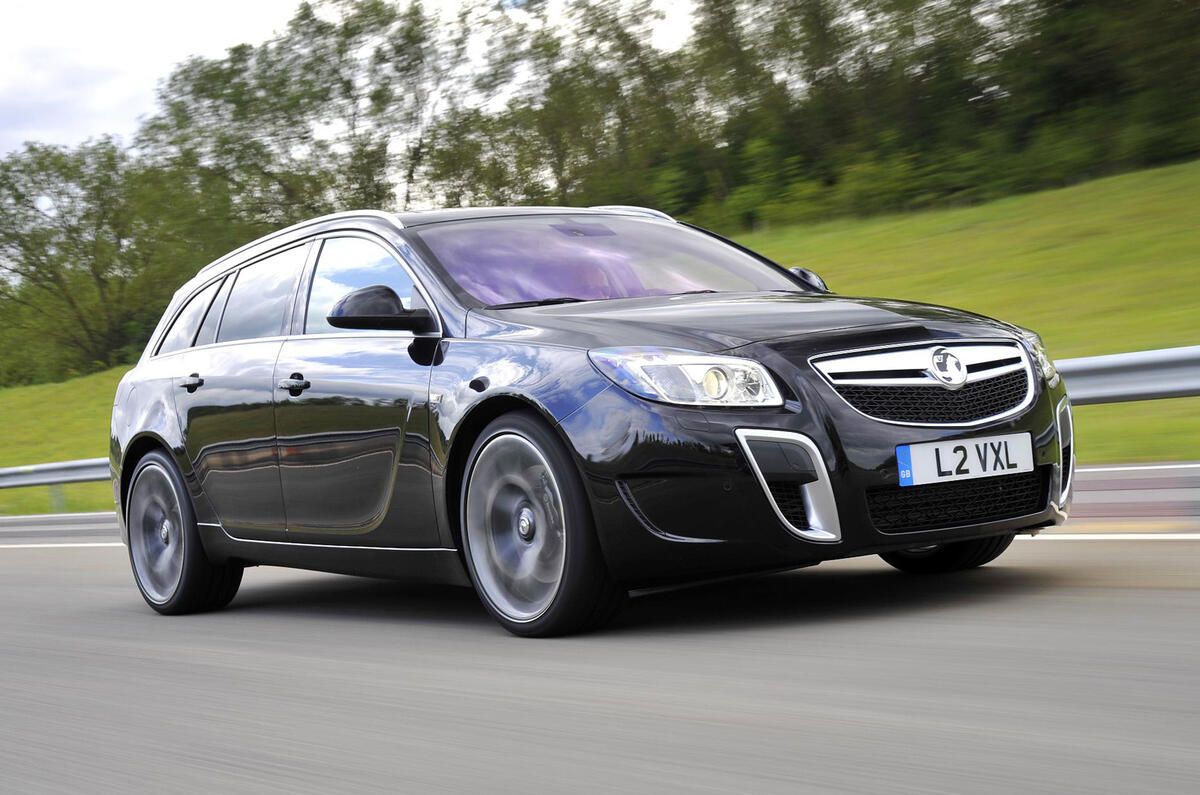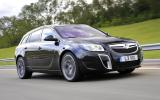What is it?
A footnote in the story of a performance car that may well have passed you by. Vauxhall’s Insignia VXR is now available with a six-speed automatic gearbox.
Hardly sounds like front page news, but it is of a quiet kind of importance given the change in character that Vauxhall’s family-sized VXR model went through while regenerating, Dr Who-style, from Vectra to Insignia back in 2009.
Because while the Vectra VXR was a real tearaway front-driver with a lively chassis and a stability system that could reasonably be described as ‘non-interventionist’, the Insignia VXR is a much more civilised machine that – by Vauxhall’s own admission – is supposed to show that VXRs can be fast as well as well-manned and grown up.
In that context, you’d expect a slick, well-chosen six-speed automatic gearbox to be a welcome addition, wouldn’t you?
See pics of the Vauxhall Insignia VXR Sports Tourer in action
What’s it like?
Just as our 2009 road test on the manual version recorded, it’s a practical, usable and comfortable estate car that’s all the more smooth and easy to use for its torque converter transmission.
Excellent seats provide a first class driving position in the Insignia VXR, and a great vantage point out of a cabin that’s every bit as well equipped as you’d expect for £36k, and – in 95 per cent of those places where your gaze falls – every bit as well appointed. Even with those big sports buckets there’s plenty of room for adults in the back seats, and 540 litres of boot space seats-up – which beats a BMW 3-series Touring and an Audi S4 Avant.
At high revs, the hot Insignia’s forced V6 belts out a thin but elegant noise that’s entirely pleasant to listen to. But there isn’t much else you’ll really get excited by.
A kerbweight of almost two tonnes was enough to make 321bhp feel entirely ordinary in the manual version, and with a torque converter auto (which saps power and torque by its very nature), the Insignia lacks the urgent performance required of a truly thrilling driver’s car.
It doesn’t help that, even in ‘VXR’ mode, the gearbox can frustratingly slow to kickdown left in ‘D’, and unsettlingly keen to swap ratios at other times. In manual mode it’s easier to control – but then the disappointment comes from an engine that never delivers that kick of torque you expect from a turbocharged unit.
The Insignia VXR has a well-judged chassis that offers a range of ability from comfy and refined in ‘Normal’ mode to secure and tied down in ‘VXR’ mode. It’s got lots of traction too, thanks to that Haldex asymetrical cross-wheel drive system. But it’s resolutely inert and unengaging at the limit of grip; entirely unwilling to be adjusted in a corner, either by the application of throttle or the removal of it. The Insignia VXR’s steering does the car few favours, either: it’s inconsistently paced and entirely without feel, and takes real effort to build any confidence with.
Should I buy one?
Probably not. The addition of a torque converter ‘box doesn’t change our opinion of the Insignia VXR; it’s a usable and capable family holdall, but a flawed and uninvolving performance option. It’s also out of its depth priced against premium opposition.
























Add your comment